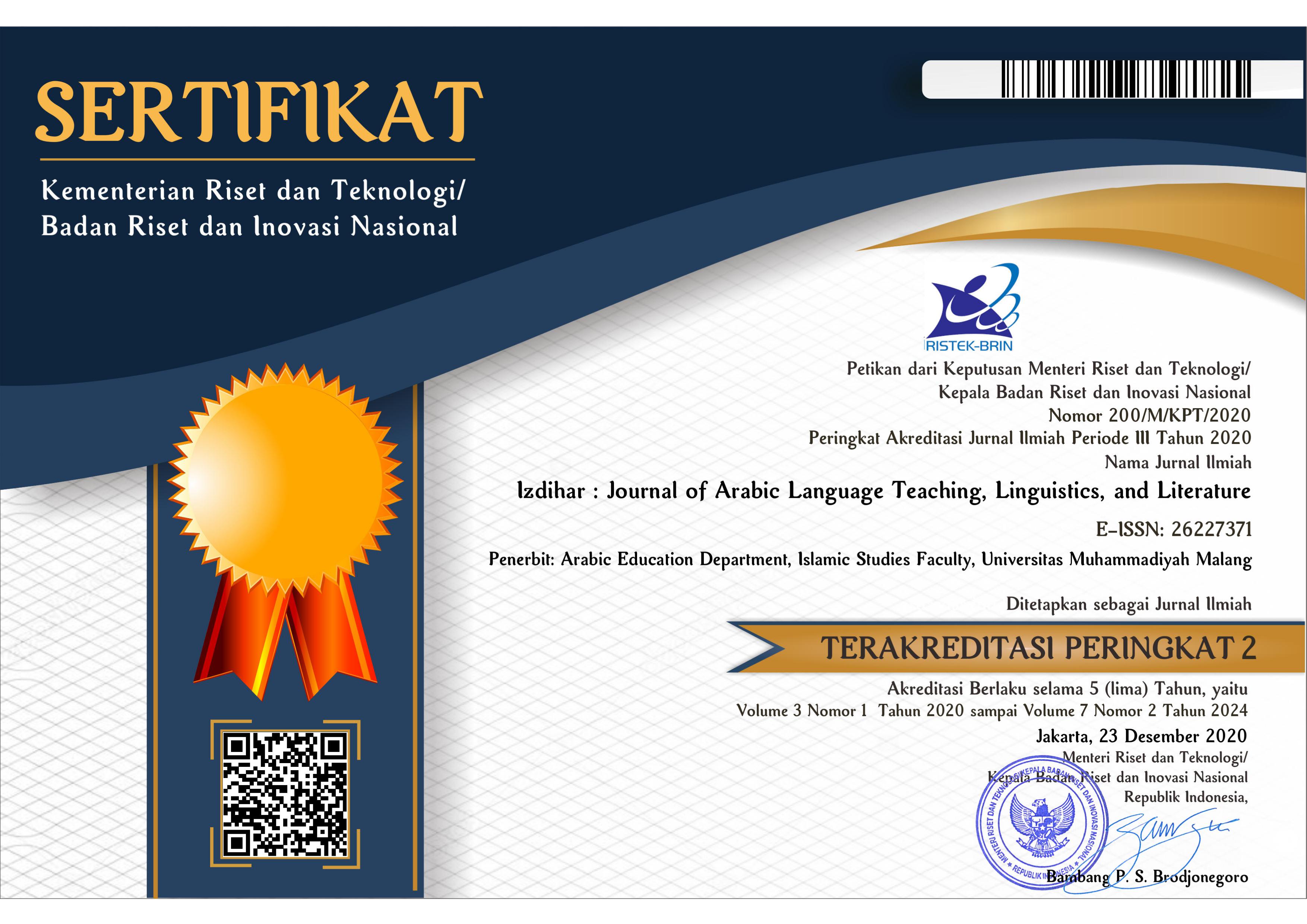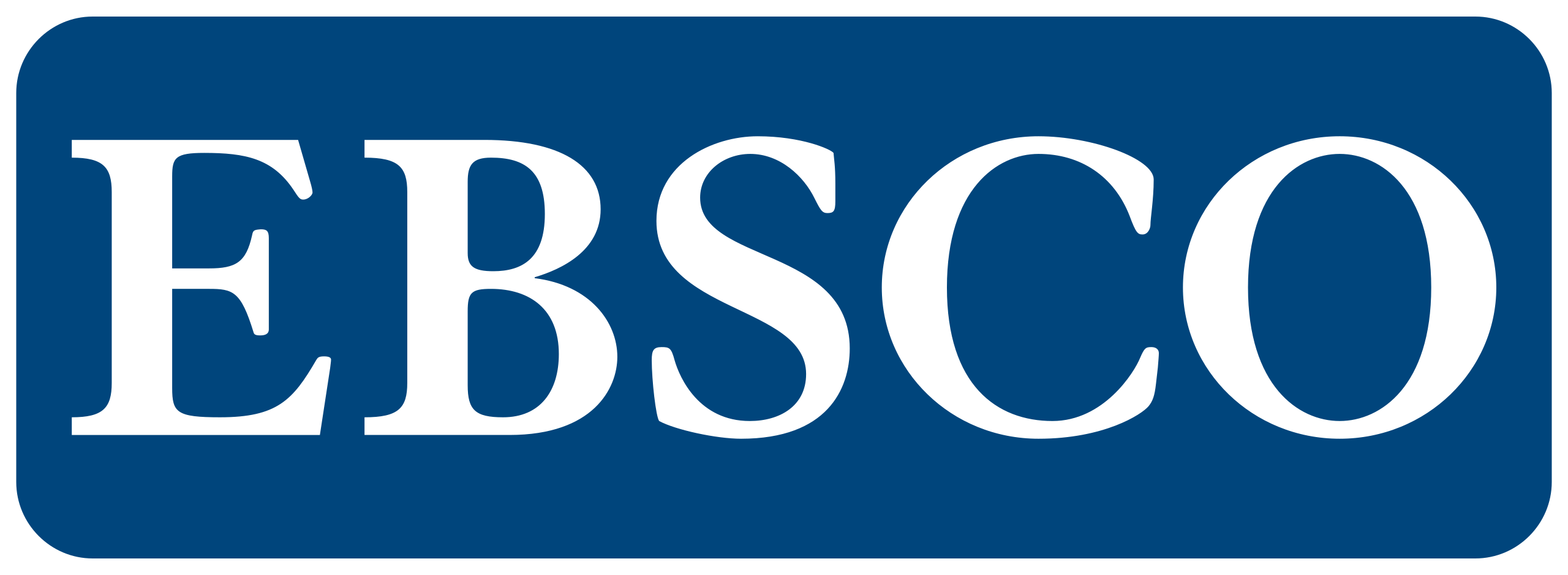Creative Teaching Model for Second Language Learning in the Post-Pandemic Era
DOI:
https://doi.org/10.22219/jiz.v4i3.18354Keywords:
Creative Teaching, Second Language Lecturers, Post-PandemicAbstract
Indonesia is currently trying to reorganize the education system post-pandemic by using hybrid learning system. In this hybrid learning process, lecturers are required to grow and develop their creativity. This article described the mapping of the model of second language teaching lecturers both English and Arabic at Maulana Malik Ibrahim State Islamic University of Malang on creativity in teaching, in particular to find out how well they understand the concept of creativity and the implementation of creative teaching in the form of classroom activities. This method used was qualitative approach with the type of content analysis. Data were collected through in-depth interviews with 21 second language lecturers, then the data were analyzed using Krippendorff content analysis. The results of this study indicated that second language lecturers had a comprehensive understanding of the demands of creativity in this post-pandemic, because they can clearly explained the meaning of creativity both in ideas and in its realization. In addition to understood creativity and its implementation in teaching activities, this research also showed the synergy between individual creativity as reflected in professional teaching and organizational creativity as seen from the readiness of this university to develop students' creative attitudes through support for campus facilities.
Downloads
References
Akyıldız, S. T., & Çelik, V. (2020). Thinking outside the box: Turkish EFL teachers’ perceptions of creativity. Thinking Skills and Creativity, 36, 100649. https://doi.org/10.1016/j.tsc.2020.100649
Barry, D. M., Kanematsu, H., Nakahira, K., & Ogawa, N. (2018). Virtual workshop for creative teaching of STEM courses. Procedia Computer Science, 126,927 927–936. https://doi.org/10.1016/j.procs.2018.08.027
Bonetto, E., Pichot, N., Pavani, J.-B., & Adam-Troïan, J. (2021). The paradox of creativity. New Ideas in Psychology, 60, 100820. https://doi.org/10.1016/j.newideapsych.2020.100820
Craft, A., Hall, E., & Costello, R. (2014). Passion: Engine of creative teaching in an English university? Thinking Skills and Creativity, 13, 91–105. https://doi.org/10.1016/j.tsc.2014.03.003
Guo, J., Zhang, J., & Pang, W. (2021). Parental warmth, rejection, and creativity: The mediating roles of openness and dark personality traits. Personality and Individual Differences, 168. https://doi.org/10.1016/j.paid.2020.110369
Hana, N., & Hacène, H. (2017). Creativity in the EFL Classroom: Exploring Teachers’ Knowledge and Perceptions. Arab World English Journal, 8(4), 352–364. https://doi.org/10.24093/awej/vol8no4.24
Huang, Xian-han, & Lee, J. C. (2015). Disclosing Hong Kong teacher beliefs regarding creative teaching: Five different perspectives. Thinking Skills and Creativity, 15, 37–47. https://doi.org/10.1016/j.tsc.2014.11.003
Huang, Xianhan, Lee, J. C.-K., & Dong, X. (2019). Mapping the factors influencing creative teaching in mainland China: An exploratory study. Thinking Skills and Creativity, 31, 79–90. https://doi.org/10.1016/j.tsc.2018.11.002
Jeffrey, B., & Troman, G. (2013). Managing creative teaching and performative practices. Thinking Skills and Creativity, 9, 24–34. https://doi.org/10.1016/j.tsc.2013.01.003
Krippendorff, Klaus. (2004). Conten Analysis an Introduction to Its Methodology. Sage Publication : London
Kurt, G., & Önalan, O. (n.d.). TURKISH PRE-SERVICE EFL TEACHERS’ PERCEPTIONS OF CREATIVITY. 14.
Maley, Alan., Kiss, Tamas (2018). Creativity and English Language Teaching From Inspiration to Implementation. Palgrave : Macmillan
Mazerant, K., Willemsen, L. M., Neijens, P. C., & Noort, G. V. (2021). Spot-On Creativity: Creativity Biases and Their Differential Effects on Consumer Responses in (Non-)Real-Time Marketing. Journal of Interactive Marketing, 53. https://doi.org/10.1016/j.intmar.2020.06.004
Mehta, M., Chandani, A., & Neeraja, B. (2014). Creativity and Innovation: Assurance for Growth. Procedia Economics and Finance, 11, 804–811. https://doi.org/10.1016/S2212-5671(14)00244-5
Mohammad, N., Yasin, R. M., & Ana. (2015). Creative Teaching in Design and Technology Curriculum: Using Structural Equation Modeling. Procedia - Social and Behavioral Sciences, 204, 240–246. https://doi.org/10.1016/j.sbspro.2015.08.146
O’Keeffe, V., Boyd, C., Phillips, C., & Oppert, M. (2021). Creating safety in care: Student nurses’ perspectives. Applied Ergonomics, 90, 103248. https://doi.org/10.1016/j.apergo.2020.103248
Rankin, J., & Brown, V. (2016). Creative teaching method as a learning strategy for student midwives: A qualitative study. Nurse Education Today, 38, 93–100. https://doi.org/10.1016/j.nedt.2015.12.009
Rus, D. (2020). Creative Methodologies in Teaching English for Engineering Students. Procedia Manufacturing, 46, 337–343. https://doi.org/10.1016/j.promfg.2020.03.049
Sari,R.R. (2020). Peran Guru dalam Pembelajaran Kreatif Bahasa Arab ditinjau dari Perspektif Al-Qur’an. Arabia: Jurnal Pendidikan Bahasa Arab, 12(2), 1-18. http://dx.doi.org/10.21043/arabia.v12i2.7445
Suciu, T. (2014). THE IMPORTANCE OF CREATIVITY IN EDUCATION. Economic Science, 7(2), 8. https://www.academia.edu/11981600/The_important_of_creativity_in_education
Tinnon, E. A. (2014). Scavenger hunt: A creative teaching strategy to introduce pharmacological concepts and ethical concerns. Teaching and Learning in Nursing, 9(3), 104–107. https://doi.org/10.1016/j.teln.2014.03.004
Tsai, C.-Y., Chang, Y.-H., & Lo, C.-L. (2018). Learning under time pressure: Learners who think positively achieve superior learning outcomes from creative teaching methods using picture books. Thinking Skills and Creativity, 27, 55–63. https://doi.org/10.1016/j.tsc.2017.11.003
Downloads
Published
How to Cite
Issue
Section
License
Copyright (c) 2021 Risna Rianti Sari, Alfiatus Syarofah, Harir Mubarok, Izdihar : Journal of Arabic Language Teaching, Linguistics, and Literature

This work is licensed under a Creative Commons Attribution-ShareAlike 4.0 International License.
Copyright Notice
Authors who publish with this journal agree to the following terms:
- Authors retain copyright and grant the journal right of first publication with the work simultaneously licensed under a Creative Commons Attribution-ShareAlike 4.0 International License that allows others to share the work with an acknowledgment of the work's authorship and initial publication in this journal.
- Authors are able to enter into separate, additional contractual arrangements for the non-exclusive distribution of the journal's published version of the work (e.g., post it to an institutional repository or publish it in a book), with an acknowledgment of its initial publication in this journal.
- Authors are permitted and encouraged to post their work online (e.g., in institutional repositories or on their website) prior to and during the submission process, as it can lead to productive exchanges, as well as earlier and greater citation of published work (See The Effect of Open Access).
Copyright (c) 2019 Izdihar : Journal of Arabic Language Teaching, Linguistics, and Literature

This work is licensed under a Creative Commons Attribution-ShareAlike 4.0 International License.

















